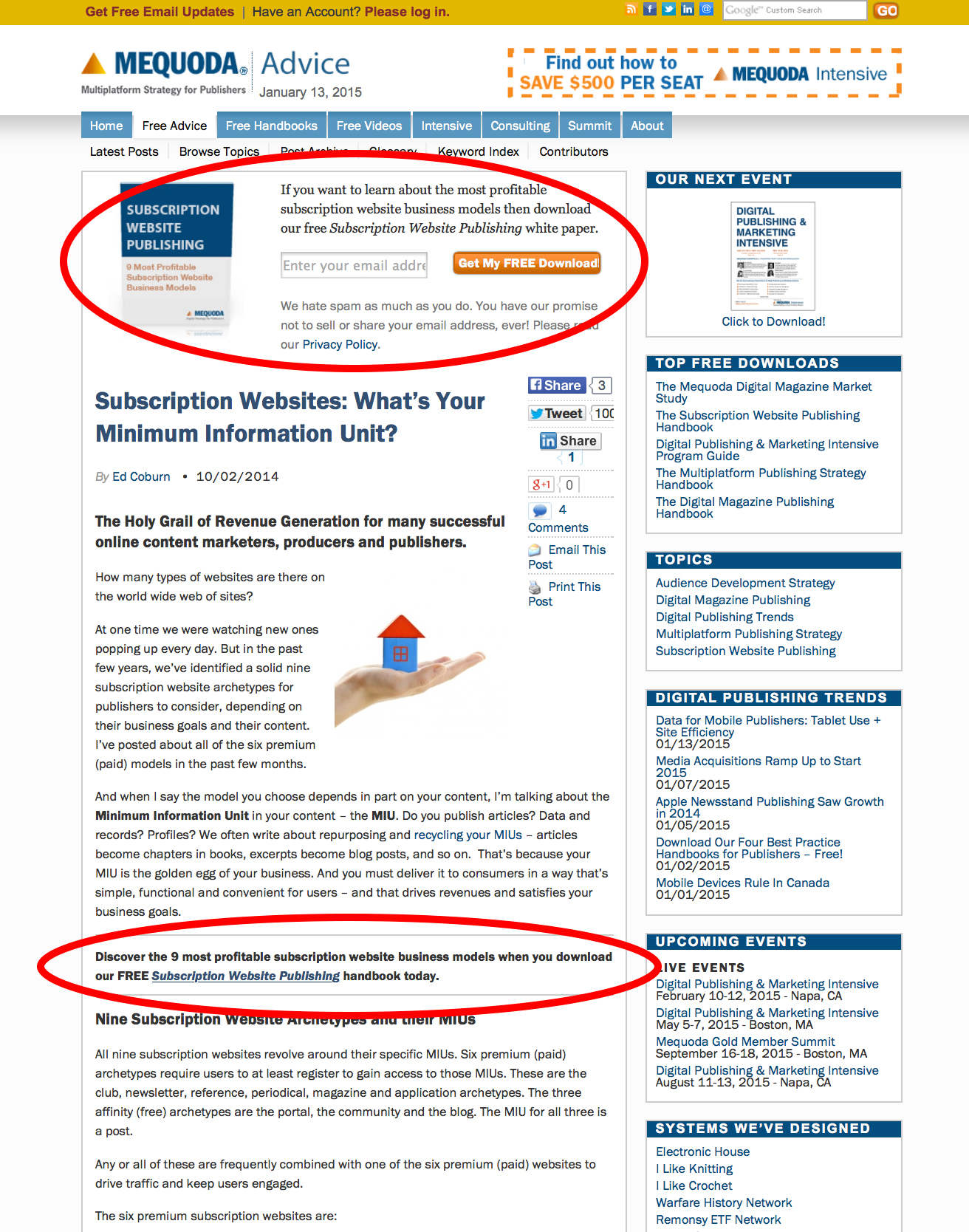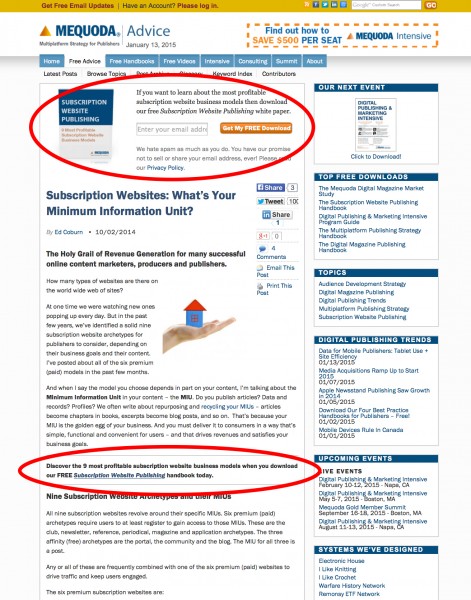
Grow your email list with website architecture that gives your readers what they want
 If at least 2% of your website visitors aren’t converting into email subscribers, then you’re reading exactly what you should be. And most publishers are averaging much less than a single percent, so odds are, you’re in the right place.
If at least 2% of your website visitors aren’t converting into email subscribers, then you’re reading exactly what you should be. And most publishers are averaging much less than a single percent, so odds are, you’re in the right place.
To develop a website that eagerly accepts email addresses, start with a freemium.
Your freemium is a free product that you give away in exchange for an email address. If you’re a knitting magazine, it could be a pattern. If you’re a health publisher, it could be a white paper on heart health. If you’re a food publisher, it could be a free digital cookbook.
To create your freemium quickly, you can pull content that already exists on your site, or in your magazine, and stitch it together into a cohesive resource. Create original content if you have time, but in the spirit of recycling, we still suggest it’s broken up later on and ends up in your blog.
Next, create a rapid conversion landing page for your freemium.
A rapid conversion landing page (RCLP) is the landing page for your freemium. It’s a long salesletter, at least 1,500 words, that’s optimized for search. It begins with a simple email capture form, and the body of the salesletter is below the first email capture form, so that any user can easily subscribe to your newsletter and get their free download, but they can also read the rest of the letter if they want to. There are several more email capture forms throughout the salesletter, so that there’s always one above the fold.
[text_ad]
Next, align your freemium with a category on your site.
Decide, where does this freemium align best with my content? If you’re publishing a book on heart health, you might align it with a cardiovascular category.
Next, turn your category into a zone.
Every category of content on your site is a zone. We call identifying these zones 3C Zone Architecture. It’s the process of turning your category page, and every article in that category, into a zone for your related freemium.
- Your category page will now include a link to the freemium.
- Your articles will now include a text ad to the freemium. More on text ads.
- When a user lands on any article in this category, they’ll see a floater first. More on floaters.
- Any non logged-in user will now see an OFIE for the freemium on top of your category and article pages. More on OFIEs.
And you will convert more website visitors into buyers using this architecture because:
- You’re giving something away for free.
- You’re giving something away for free that you know they’re interested in, because they’re reading a page on the same topic.
- You’re approaching them two ways: visually with an OFIE, and textually in a text ad.
The goal of this process is to create a freemium for every category on your site. That way, no matter what article is being read, there’s a highly relevant free download being offered.
Because, if you’re writing an article about an apple pie recipe, wouldn’t a reader be highly interested in a book on the top ten best pie recipes? And wouldn’t that user convert at a much higher rate than if A) you had no download or B) you offered her a download on green bean recipes?
The answer is yes, and that’s why website architecture is so important. In our world, all pages lead back to the RCLP. If yours aren’t, read more about 3C Zone Architecture.


